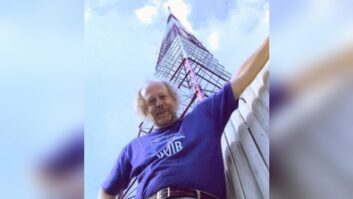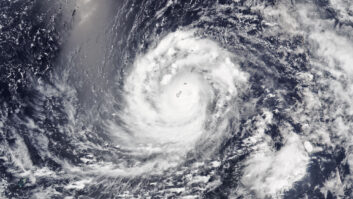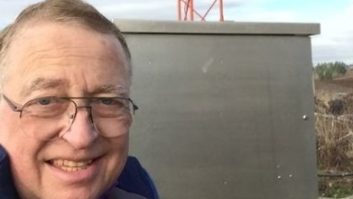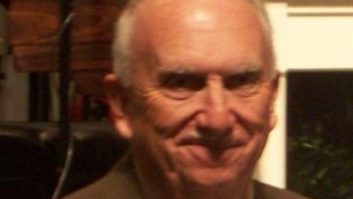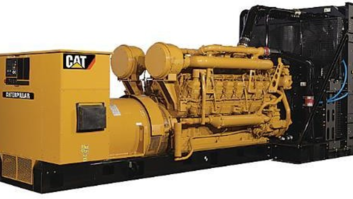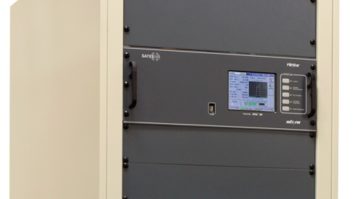Passing Inspection
Oct 1, 2003 12:00 PM, By David Black

The Broadcast Media and Technology Center’s radio news team produces more than 2,000 radio news stories each year, which are accessed by radio stations daily via telephone dial-up service, as well as audio files available to radio stations and the public through the USDA’s website. The USDA’s radio service includes news, feature and documentary reporting. The service is particularly important to many radio stations in rural areas of the country that do not have a Washington correspondent. The radio service has always been well supported by broadcasters due to its reports covering issues from food safety to international trade in a non-partisan manner. The Radio Newsline typically has eight to 10 items that are accessible via telephone dial-up and the Internet. There is also a weekly Feature Service, produced by USDA Radio, that includes one documentary, five consumer features and five agritape features. These are mailed on CD to 675 radio stations but can also be accessed via the USDA’s website. This service has won numerous international and national broadcasting awards.
Several months ago, we evaluated our Washington, D.C., facility. Our team realized that there were several areas in the studio we could improve to provide better service to the studio’s users. We began by looking into creating a new talk studio and control room with upgraded equipment, as well as a product that could streamline our distribution of news stories.
The first issue the team addressed was the overall condition of the studio, control room and equipment. We use our facility for a number of purposes, including interviews and addresses with Ann M. Veneman, the Secretary of Agriculture. We also produce and distribute official audio for the USDA. Our facility is used by several government offices and departments, such as the Department of Interior. Because of its importance, our facility needs to be in top condition with the most up-to-date equipment. Secretary Veneman believed our old studio was not conducive to interviewing, and she wanted something more comfortable and ergonomically structured.
The redesigned control room at the USDA.

The USDA wanted to update its communications structure for digital. The ergonomics of the old studio were terrible, so the redesign had to present a more efficient work space that would simplify use. In addition, we wanted to eliminate the obsolete and redundant equipment, increase the accessibility of equipment for maintenance, improve the cosmetic appearance to make the studio more appealing to the staff and visitors, increase the USDA’s ability to give presentations and video press conferences and improve the overall system reliability.
One twist for the talk studio is that it serves radio and television needs. It had to be laid out to be amenable to TV camera shots for press conferences.
Getting started
We chose Harris to remodel the control room and talk studio, and to install the new equipment. Harris began by gutting our current space and removing the old equipment.
After an overall cleaning, the space was painted and carpeted. Because the studio is not a 24/7 facility, the installation was scheduled during off-hour use. For this installation, security was tighter than would be expected at a traditional office building. The building’s security team inspected everything coming in and the installation crew was accompanied around the building.
Custom-designed furniture was built to fit the space exactly. Harris also refurbished the Radiomixer console. The talk studio was integrated with the control room. With the reconstruction, the telephone information services were also improved. We now have an increased capacity for call-ins. In addition, a new radio feature was created for the United States’ E-government initiative, where all of our audio is available on the Internet.
The talk studio was designed with a clean layout. This helps make the variety of guests feel more at ease.

The reconstructed studio had the features Secretary Veneman was looking for. The studio is now constructed to be more comfortable and conducive to interviews. It has improved lines of sight between the radio show hosts and guests, as well as between the studio and control room.
Our second need was to streamline our news distribution process. There is a team of reporters who write articles related to the agricultural business. With the old system, the stories were manually dubbed to analog carts. The USDA needed a tool that would automate the transfer of the audio articles to the telephone system and Web, thereby shortening the process and increasing the amount of information that could be provided.
Back to work
The USDA has three full-time reporters who use cassettes and Minidiscs for field work. Replacement technologies are being considered for the future. Most of the material gathered in the field is from covering Washington events and meetings. When she travels, the USDA Secretary has someone with her to cover events as they occur. The reporters also conduct phone interviews.
Radio stations and the public can call the USDA to listen to feeds, or to listen and ask questions during press conferences and reports.
View of the equipment rack in the control room.

Efficiency of workflow and the ability to update material easily throughout the day were important. Harris recommended the D.A.V.I.D. system. Loaded audio elements are automatically posted to the website and made available to the dial-in telephone system for remote access. Audio files can be posted in MPEG, Real and WAV formats, as well as in a basic text format. We are now completely tapeless.
There is no formal rack room for the facility. There is a large telephone room with hundreds of phone lines. The servers and computers are in the individual studios.
Initially, we were looking for a small upgrade on the equipment. However, when we saw what new technology was available, we took a giant step. The D.A.V.I.D. system allows us to reach constituents faster with more information. While the team is pleased with the results, the real stamp of approval comes from Secretary Veneman. She has already brought other government officials to show off �her� radio studio.
EQUIPMENT LIST
D.A.V.I.D. automation systems, installation
Harris Radioline Furniture
Harris on-site installation
Harris World Feed Panel
LPB silent mic booms
Refurbished PR&E Radiomixer 20
Rane HC6 Headphone amplifier
Sony Minidisk MDS-E12
Tascam 122MKIII cassette
Technics SL1200MKII turntable
Telos 2�12 hybrid
Telos Assistant Producer sreener software
Telos Desktop Director
David Black is the director of the USDA’s Broadcast Media and Technology Center, Washington, DC.

